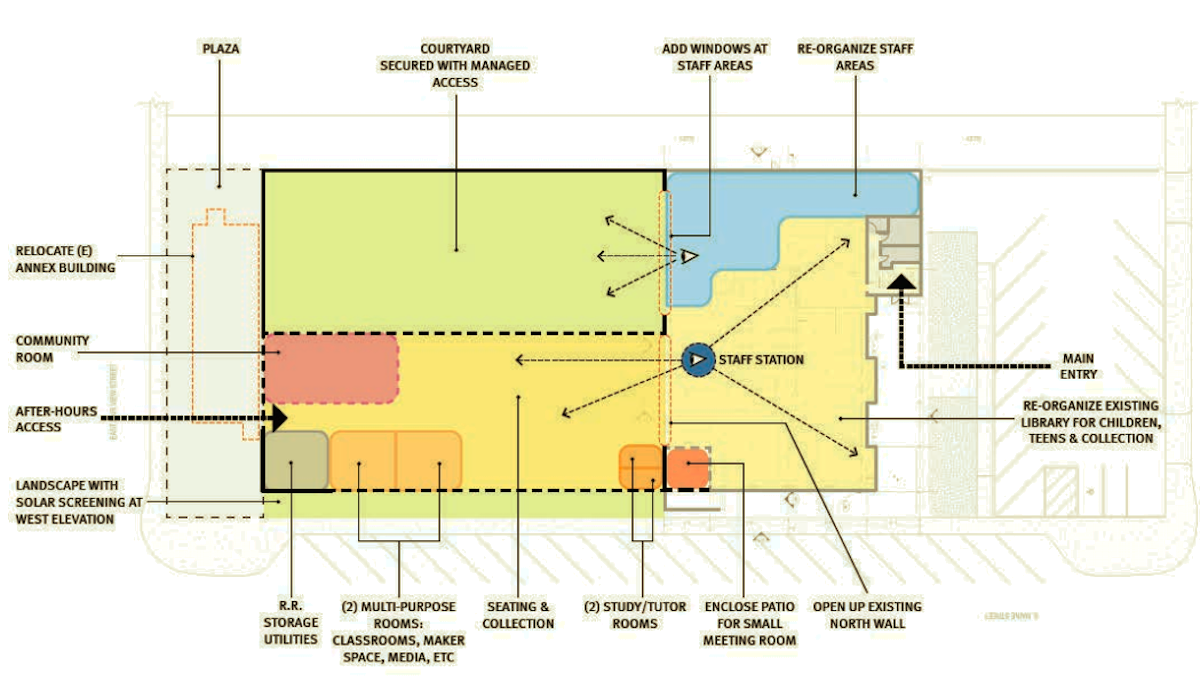The Churchill County Library has outgrown its present location, and as a result of increased usage over the years, Churchill County commissioners received the newest Library Strategic Plan at their last meeting.
Churchill County Librarian Carol Lloyd, who led the library through a repurposing project in 2015 to reconfigure the space, said meeting the needs of the community is important, especially with the impact of the coronavirus pandemic on their services. Lloyd said in 2015 the project repurposed the existing building on the corner of Maine and Virginia streets to enhance and improve function and efficiency in both the public and staff areas of the library.
“While the usage and demand for library services was already growing prior to the pandemic, demands for more and different services have grown significantly,” she explained in her opening remarks that are included in the strategic plan.
Lloyd, who has been with the library since 2012, said a 12-member strategic planning task force looked at the services provided by the library and future needs. She said the strategic plan that focuses on 2022-2026 will provide more services through expansion, outreach and access.
“The library is a catalyst for discovery, creativity, and ingenuity,” she said. “It is also constantly bringing to life social connections that promote personal and community well-being.”

Based on previous numbers and projections, the library is expected to provide services to 21,548 users by 2025-26, and increase from the 12,750 users from 2018-2019. According to figures, the library was on its way to a record year in 2019-2020, but the lockdowns imposed by COVID-19 stopped that.
Lloyd previously said the library has downloadable material and also belongs to a consortium that shares eBooks, audio books and other material. Lloyd said the facility is a venue for artists to show their work.
Kelli Kelly, president of the Library Board of Trustees, walked the commissioners through the planning process. She said the task force received data on the needs from families, community members, children, key organizations, civic leaders and residents. She said the focus also looked at the seniors, youth and military who use the library.
“Military families move every 2-3 years,” Kelly said. “The first place they go to is the library to connect to the community,” she said.
Other groups who depend on library services include, for example, youth, students and the Hispanic community
The current library, which was built in the mid-1960s, has outgrown the area’s population. Based on the 1970 population, Churchill County was home to 10,513 residents, while the most recent population from 2020 shows 25,387. The library’s report included the following:
• According to national library standards, the current facility at 9,265-square feet is too small by affording only one-third square foot per capita.
• Industry standards recommend five to eight seats per thousand residents, which would expand seating between 160-256 seats. Currently, the library has 48 seats.
• Computer work stations is far below the industry standards.
• Public meeting rooms at the Churchill County Library are virtually nonexistent.
Kelly said in order to meet the needs, the strategic plan calls for expanding the library’s space. A 2019 cost estimate for funding the plan would range from $6 to $11.5 million, which would also include $90,000 for a technology mobile lab and $86,000 for additional staff.

The strategic plan provided a list of potential partners that could provide assistance with funding the project. The presentation included the Governor’s Office of Science, Innovation and Technology; Nevada Arts and Humanities; corporations; Naval Air Station Fallon; National Endowment for the Humanities; individual donors; foundations and other philanthropies; Churchill County; businesses; and grants.
Zip Upham, president of the Churchill Library Association, said the group is the fundraising arm for the library and helps procure programs the county budget doesn’t. The association has funded the STEAM (science, technology, engineering, arts and mathematics) program and also the reading and other programs.
Upham said it will be a “fairly heavy lift” to fund the expansion, but there needs to be a community buy-in and government support.

